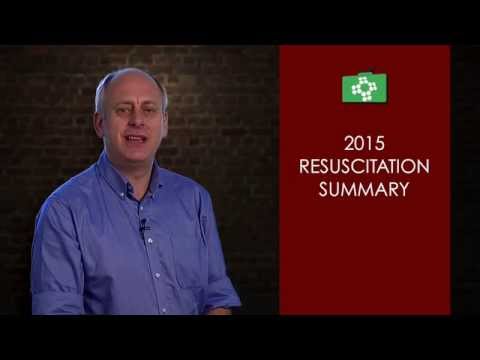
There are not as many changes in 2015 as there have been in previous years, but the main changes are as follows.
Guidelines 2015 highlights the critical importance of the interactions between the emergency medical dispatcher, the bystander who provides cardiopulmonary resuscitation (CPR) and the timely deployment of an automated external defibrillator (AED). An effective, co-ordinated community response that draws these elements together is key to improving survival from out-of-hospital cardiac arrest.
The emergency medical dispatcher plays an important role in the early diagnosis of cardiac arrest, the provision of dispatcher-assisted CPR (also known as telephone CPR), and the location and dispatch of an AED. The sooner the emergency services are called, the earlier appropriate treatment can be initiated and supported.
The knowledge, skills and confidence of bystanders will vary according to the circumstances of the arrest, level of training and prior experience. The bystander who is trained and able should assess the collapsed victim rapidly to determine if the victim is unresponsive and not breathing normally and then immediately alert the emergency services. Whenever possible, alert the emergency services without leaving the victim.
With basic life support, the key messages are:
Ensure it is safe to approach the victim.
Promptly assess the unresponsive victim to determine if they are breathing normally.
Be suspicious of cardiac arrest in any patient presenting with seizures and carefully assess whether the victim is breathing normally.
For the victim who is unresponsive and not breathing normally:
Dial 999 and ask for an ambulance. If possible stay with the victim and get someone else to make the emergency call. If possible, stay with the victim while calling the ambulance. It has been added that, if the phone has a speaker facility, switch it to speaker mode as this will facilitate continuous dialogue with the dispatcher including (if required) CPR instructions.
Start CPR and send for an AED as soon as possible but do not leave the patient to search for an AED. AED units are safe to use even without training so should always be used if available.
If trained and able, combine chest compressions and rescue breaths, otherwise provide compression-only CPR. If the compressions are too shallow, it is more harmful than compressions that are too deep, therefore it is re-enforced that compressions should be between 5 to 6 cm in an average adult. CPR is difficult and it remains recommended that if possible change to a second rescuer after two minutes to ensure the quality of compressions.
Its also re-enforced, the importance or recoil. By allowing complete recoil of the chest after each compression results in better venous return to the chest and may improve the effectiveness of CPR. CPR providers should, therefore, take care to avoid leaning forward after each chest compression.
It was re-enforced that mouth to nose ventilations are an effective method of delivering breaths if you cannot deliver them via the mouth and it was added that mouth to tracheostomy ventilations we also an effective way of delivering breaths for someone with a tracheostomy tube or tracheal stoma.
Another change was that the maximum interruption in chest compressions to deliver the two breaths over 1 second and opening the airway, before resuming chest compressions, is no more than ten seconds.
With children and infants, we say compress the chest by at least one third the depth of the chest but how far is this? Its stated now still as one third the depth of the chest, but clarified as approximately 4 cm for the infant and approximately 5 cm for an older child. We still use two fingers for an infant under 1 year; use one or two hands as needed for a child over 1 year to achieve an adequate depth of compression.
With the breaths with children and infants, the duration of delivering a breath is stated as about 1 second, to coincide with adult practice.
If an AED arrives, switch it on and follow the instructions. Minimise interruptions to CPR when attaching the AED pads to the victim. Do not stop CPR unless you are certain the victim has recovered and is breathing normally or a health professional tells you to stop.
Moving on to choking, the rules are the same. Treat the victim who is choking by encouraging them to cough. If the victim deteriorates give up to 5 back slaps followed by up to 5 abdominal thrusts. If the victim becomes unconscious, start CPR.
The 2015 Advanced life support (ALS) guidelines have a change in emphasis aimed at improved care and implementation of these guidelines in order to improve patient outcomes. Increased emphasis on minimally interrupted high quality chest compressions throughout any ALS intervention. This has also been reflected in the basic life support guidelines.

